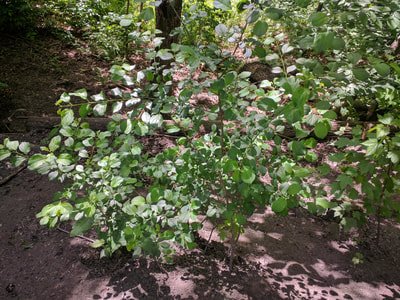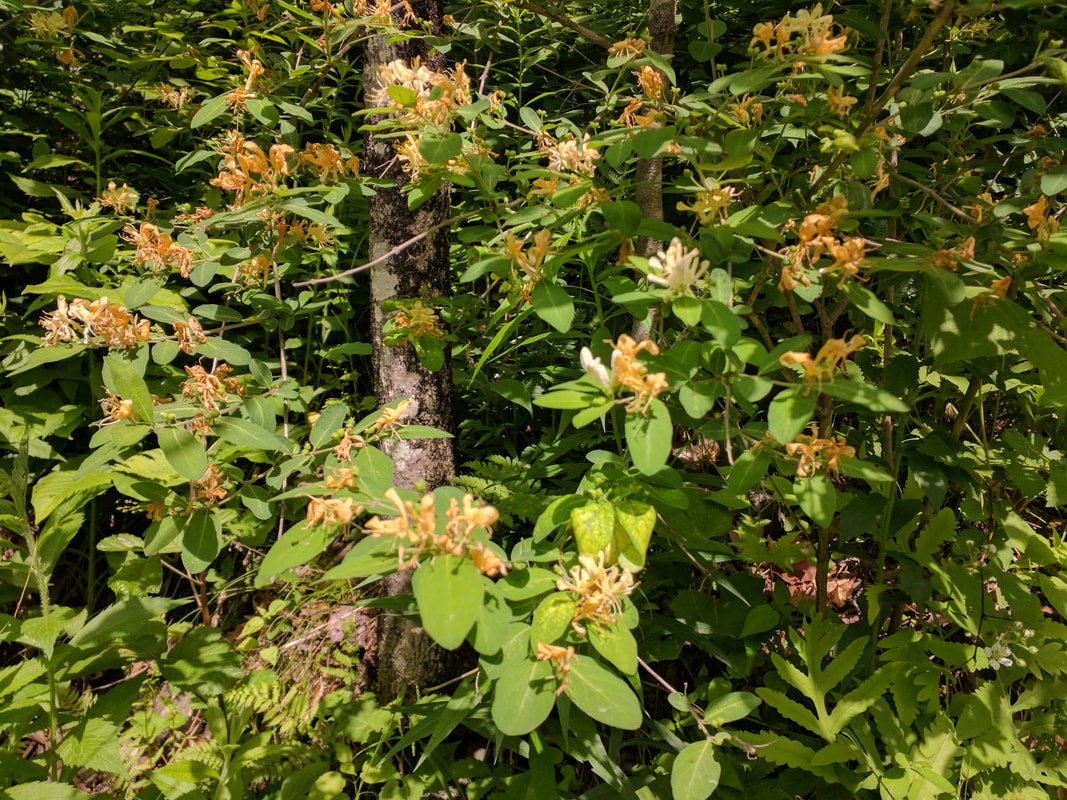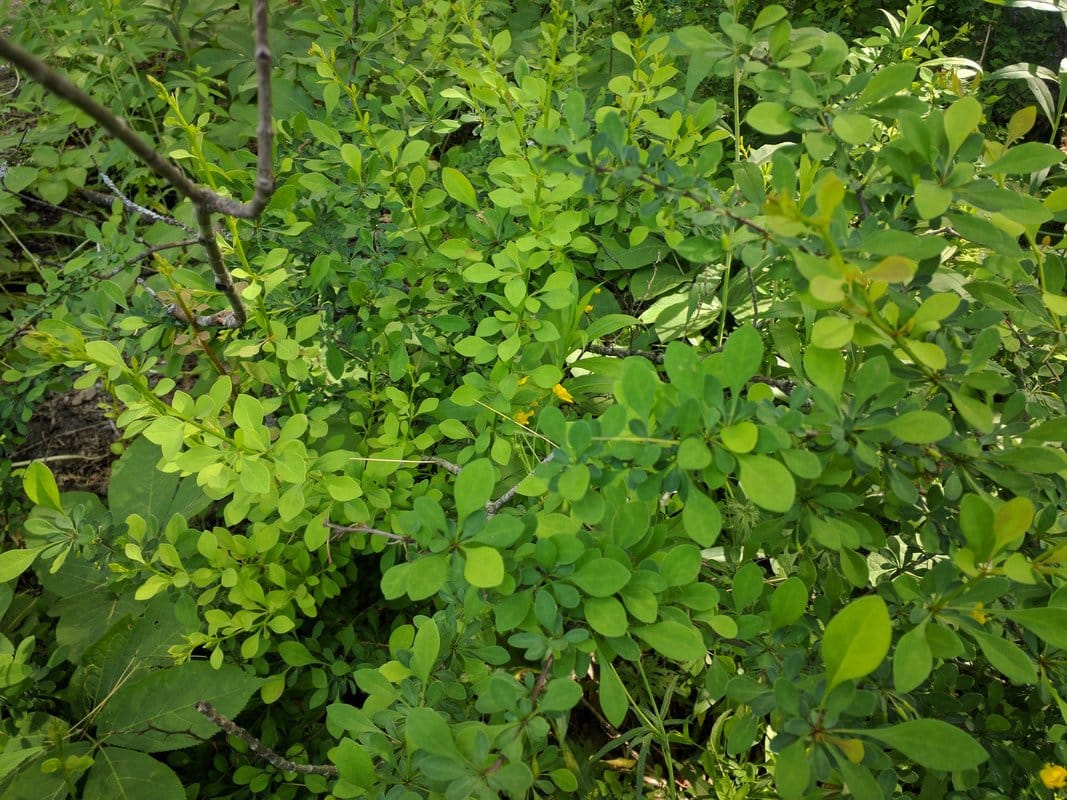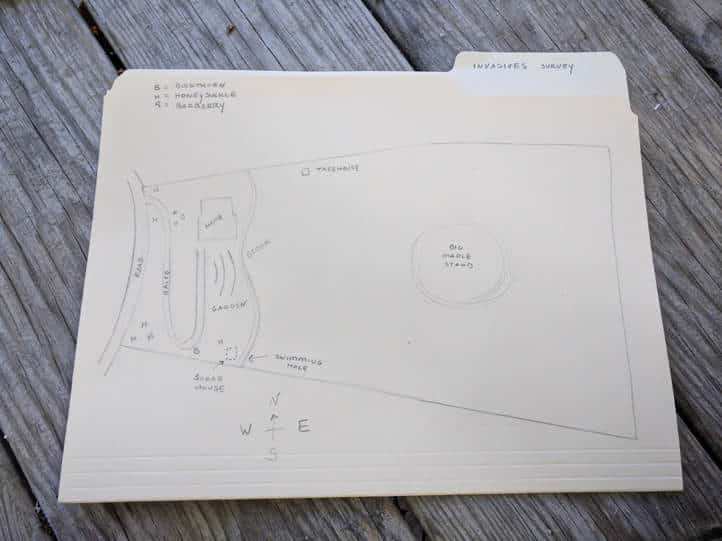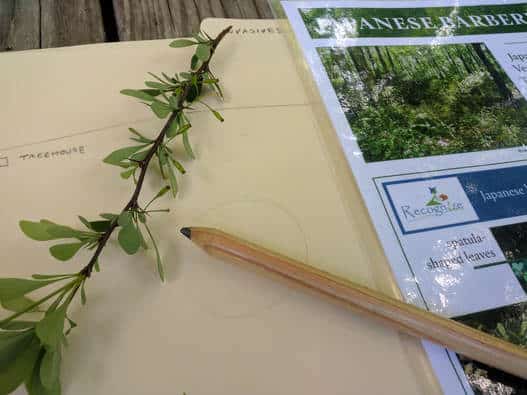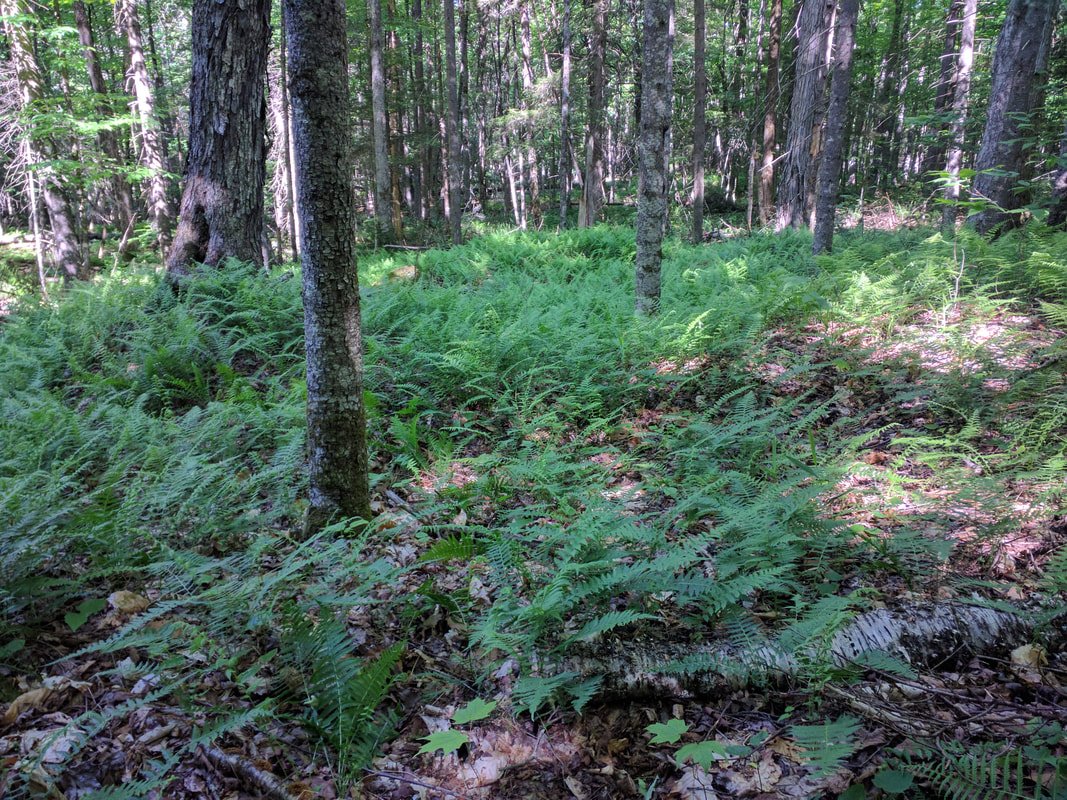The peskiest weeds in your sugar woods will be Buckthorn, Honeysuckle, and Barberry, all three found and pictured here in our sugar woods . . . for now!
It’s July. Exhale. Your syrup is bottled and shelved, your pans are cleaned and stored, and your maples are leafing out nicely. You may be working on next year’s sugar wood supply, tagging a few more trees for tapping, or drawing up plans for your first sugar house. You are planting, watering and weeding the kitchen garden. But are you weeding your sugar woods?
Weeding the woods? Yes! As we’ve discussed before, three steps a landowner can take to care for their sugar woods – especially in this changing climate – include: (1) eradicating invasive species, (2) cultivating an ideal suite of tree species, and (3) protecting riparian areas and other habitat to support diversity of non-tree species. So let’s start at the very beginning.
According to our sources, the three most pernicious and widespread invasive species in sugar country are Buckthorn, Honeysuckle, and Barberry. All three of these “ornamental” bushes harm the ecosystem by out-competing native plants and otherwise offering substandard living quarters and food to forest birds and animals. All three spread quickly. Not good. But certainly not hopeless.
The first step to controlling these pests is identifying them on your land. It’s also the fun part! That’s what we will cover in this post. Here’s what you will need:
Make a rough sketch of your plot of land for marking the location of invasive infestations. A manila folder can double as storage for reference materials and can easily be squirreled away in your filing cabinet for future use.
- A rough sketch of your plot of land that includes landmarks like your home, the road, and any natural features that might help you orient yourself. If you are having a hard time getting started, consult your file cabinet for the plot sketch you received when you first viewed or purchased your home and work from there. As you can see, we made our sketch on a manila folder that will double as the storage depot for fact sheets.
- A pencil for marking up your sketch; and
- Color copies of these Buckthorn, Honeysuckle, and Barberry invasive fact sheets prepared by the Nature Conservancy. We laminated ours for repeated use.
Armed with these materials, simply walk your land and note where these species are found. Pay particular attention to the side of roads and driveways, streams, structures, or anywhere else there is a significant break in the forest canopy. Once you find one example of a species, they are easy to spot again. Plan a walk for the Spring and the Fall: while Honeysuckle is easiest to identify by its white, yellow and pink flowers in May and June, Buckthorn and Barberry are easiest to identify by their berries in Fall.
Earlier today, we took our own first survey walk, and found multiple examples of all three of these invasive plants on the one acre of our property that has some field, road and stream frontage! The Honeysuckle was rampant, shoulder high, flowering in white, yellow and pink, and easy to spot. The Barberry – knee high with distinctive leaves, thorns (don’t touch!), and tell-tale buds where flowers must have been (berries will be) – was also pretty easy. But while we’re fairly confident that we were able to identify the Buckthorn by its u-veined leaves, we will go back in the Fall to double check for those red-to-blue berries.
The pencil tip is pointing to the Barberry buds where, by fall, red berries will appear. You can also see the single “spine” or thorn at the base of each leaf cluster. Don’t touch without gloves! They’re nasty.
The abundance of all three invasive species on our property was bad news, to be sure. However, we were delighted to discover that there was no invasive infestation on the floor of our nine acres of forest! We think the thick canopy of trees with a healthy proportion of pine keeps the flora species to a minimum of native plants like ferns and trillium.
A healthy forest floor with native ferns, wildflowers and, in the foreground, some very young maple.
All in all, we enjoyed our walk in the woods, and hope you do too! Next time, we’ll write up the hard work of removing the weeds from our sugar woods. Until then, enjoy the sun!

